I unscrew the bazooka screen from my igloo mashtun and place the keg and ice in it. It has handles and stays cold a long time.Does it have a carrying strap on it also? Those really are cool. I wish I had invented that. I think everyone should have one or more of those. Beats the hell out of bubble wrap.View attachment 771763
You are using an out of date browser. It may not display this or other websites correctly.
You should upgrade or use an alternative browser.
You should upgrade or use an alternative browser.
What came in the mail for you today?
- Thread starter BrotherGrim
- Start date

Help Support Homebrew Talk - Beer, Wine, Mead, & Cider Brewing Discussion Forum:
This site may earn a commission from merchant affiliate
links, including eBay, Amazon, and others.
Oooh, kinky
Seriously though, do the double hinges make them easier or more difficult to use?
McMullan
wort maker
- Joined
- Dec 22, 2015
- Messages
- 2,566
- Reaction score
- 3,438
Seem to be easier to fit and just feel better quality. Pressure testing the 4" next week. I've got a good feeling about them, tbh.Seriously though, do the double hinges make them easier or more difficult to use?
New immersion chiller!
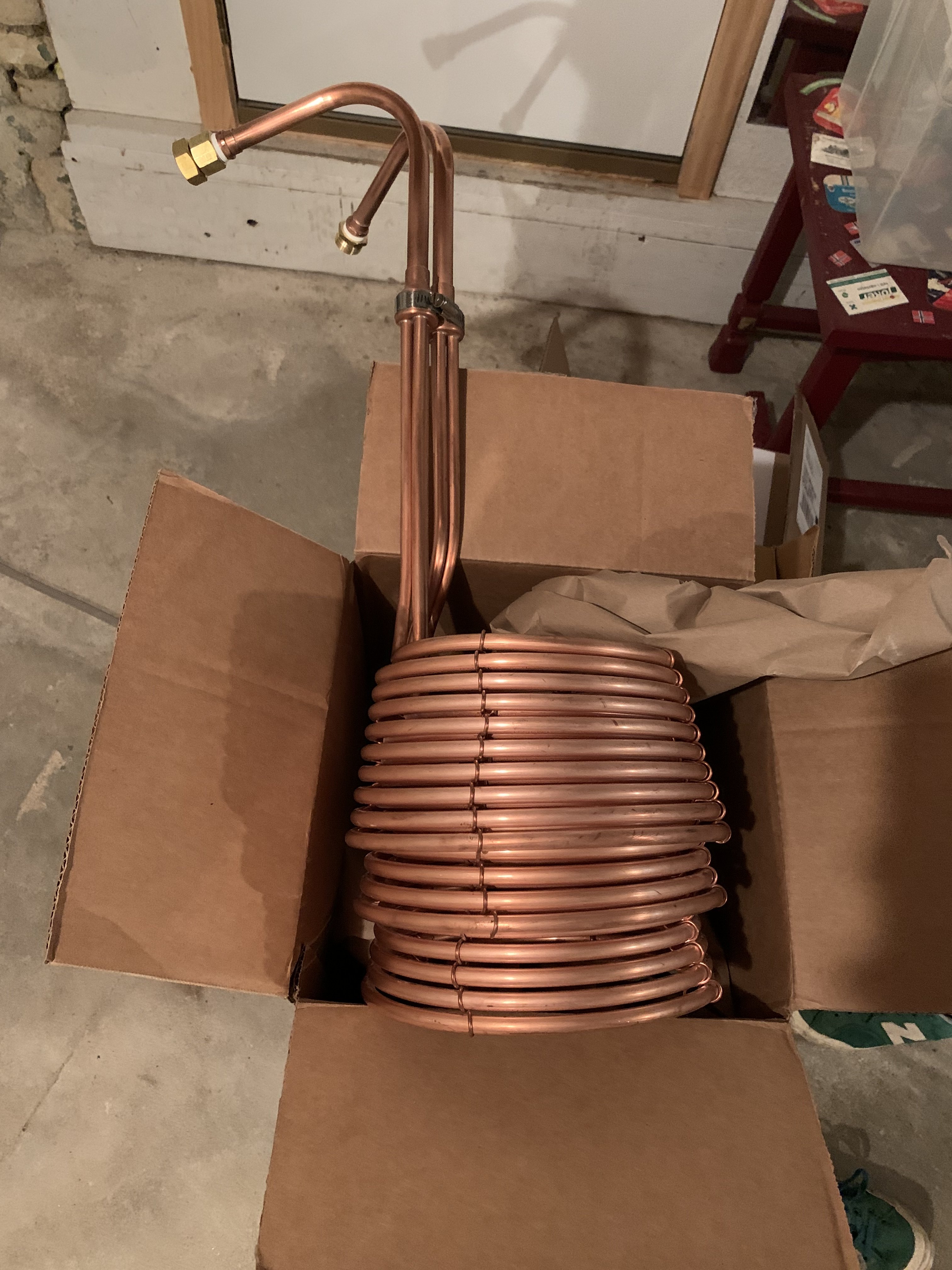


2 of this and that from Spencer, before it’s all gone.
Broken Crow
Ale's what cures 'ya
- Joined
- Oct 12, 2020
- Messages
- 2,046
- Reaction score
- 2,579
I would totally have worn those in the early eighties!!
(I used to wear safety pins in my ears, face and chest.... hey, I was young
I would totally have worn those in the early eighties!!
(I used to wear safety pins in my ears, face and chest.... hey, I was young)
I think we‘ve all been there!
This showed up in the mail last Friday, so I had a chance to put it through its paces on Saturday’s brew day. I’m blown away! This thing is incredible! I also grabbed one for my dry hopping keg. I was dubious regarding their claims that it could cope with pellet hops, but after Saturday’s results, I’m eager to see what it can do. No more tubes, balls, bags, floss… I’m geeked!!!
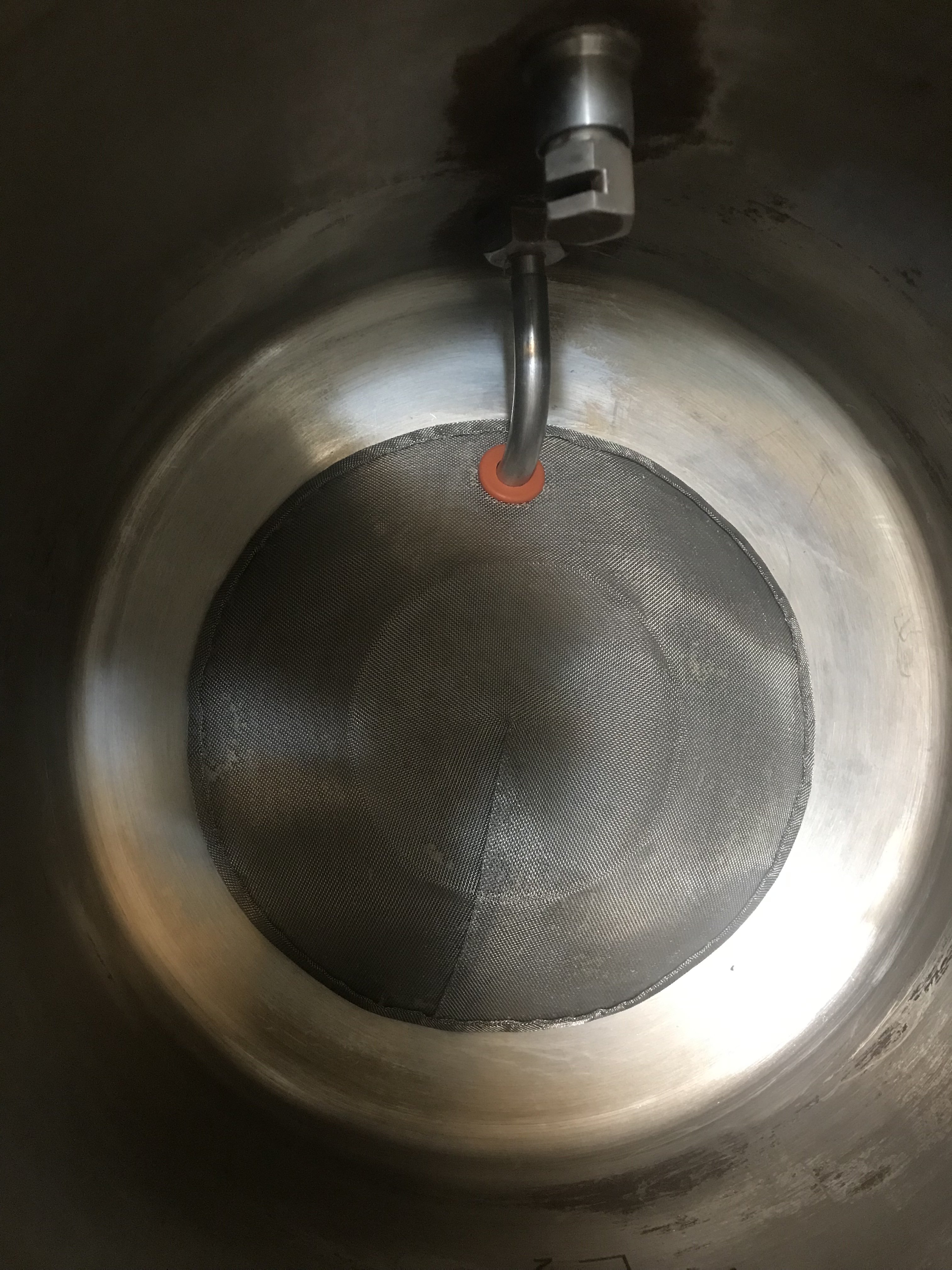



D the Catastrophist
Well-Known Member
24 inch autosiphon. I hadn't planned on moving up to larger size wine batches(I like variety so 1 gallon is perfect for me) but I inherited a batch and my mini siphon is a little too small.
This showed up in the mail last Friday, so I had a chance to put it through its paces on Saturday’s brew day. I’m blown away! This thing is incredible! I also grabbed one for my dry hopping keg. I was dubious regarding their claims that it could cope with pellet hops, but after Saturday’s results, I’m eager to see what it can do. No more tubes, balls, bags, floss… I’m geeked!!!
Awesome!
What is it?
Congrats easy to display, and nice!Medals (actually fridge magnets, but all proceeds went to a good charity so I'm happy) for latest competition.
View attachment 773287
Lithuanian farmhouse yeast, a couple of packets of assorted dried yeast (including Voss kveik in case the jars in my fridge that haven't been used in over a year are dead) and a couple of pounds of DME. I ordered Saturday night from RiteBrew.com, they shipped it Monday and it got here this afternoon (Tuesday). The ice pack was thawed but everything was still cool.
Awesome. I have V2 in my brew kettle and the minis in all my legs and they work well. You’ll be happy with them.This showed up in the mail last Friday, so I had a chance to put it through its paces on Saturday’s brew day. I’m blown away! This thing is incredible! I also grabbed one for my dry hopping keg. I was dubious regarding their claims that it could cope with pellet hops, but after Saturday’s results, I’m eager to see what it can do. No more tubes, balls, bags, floss… I’m geeked!!!
Hop Stoppers from TheElectricBrewery.com. The big one is to filter your brew kettle, the small ones go on the liquid tube in your keg to filter hops. The one downside is that you can't whirlpool in your brew kettle, you will clog the mesh filter (if you are the whirlpooling type).Awesome!
What is it?
I whirlpool with mine, but it's a low speed flow and I scrape the trub off the hop stopper every couple of minutes or so. I do the same when I drain the kettle, though, so it doesn't seem like a hassle. Just want every drop of wort I can get!Awesome. I have V2 in my brew kettle and the minis in all my legs and they work well. You’ll be happy with them.
Hop Stoppers from TheElectricBrewery.com. The big one is to filter your brew kettle, the small ones go on the liquid tube in your keg to filter hops. The one downside is that you can't whirlpool in your brew kettle, you will clog the mesh filter (if you are the whirlpooling type).
Yes, though mine hasn’t any art work. In the past I’ve use jug style growlers for storing a small bit of whatever and there’s a challenge of getting it moved as the siphon doesn’t quite fit in the neck. This has plenty of room. It’s also hella nice when sharing beer at a party.Here's what I call my big green thing; is this what your growler looks like? My german SIL gifted us this several years ago and I love it.View attachment 773395
Homebrew Harry
Well-Known Member
- Joined
- Jul 25, 2021
- Messages
- 387
- Reaction score
- 397
Brake pads and a set of shims and rubber boots, etc to do a front brake job on my car. Last time it was in the shop for an unrelated repair they said there was only 1mm of brake pad left. I've driven it about 1500 miles since, and I don't want to replace the rotors so I need to get 'er done before one of them wears through to the backing. (they're not singing yet, that's good)
Here's what I call my big green thing; is this what your growler looks like? My german SIL gifted us this several years ago and I love it.View attachment 773395
That is a serious statement of intent!
Awesome!
Awesome. I have V2 in my brew kettle and the minis in all my legs and they work well. You’ll be happy with them.
Hop Stoppers from TheElectricBrewery.com. The big one is to filter your brew kettle, the small ones go on the liquid tube in your keg to filter hops. The one downside is that you can't whirlpool in your brew kettle, you will clog the mesh filter (if you are the whirlpooling type).
I whirlpool with mine, but it's a low speed flow and I scrape the trub off the hop stopper every couple of minutes or so. I do the same when I drain the kettle, though, so it doesn't seem like a hassle. Just want every drop of wort I can get!
I can also confirm that you can whirlpool. According to them you need to keep the flow rate under 1gal/min. I have no means by which to measure my flowrate, but I just choked the pump output back and called it good. With the aid of a bag of ice, I was able to hit 48F in less than 20min with my IC.
Granted, I brewed a German pils on Saturday, so we're not talking about epic amounts of pellet hops. But the grist was 10lbs of German pils, so there was an alarming amount of thick, goopy trub standing like mesas at the bottom of the kettle...and my German pils uses 4oz of pellet hops. There are nastier beers out there, but this one wasn't a push over. I'll proceed with caution and confidence.
JARReeves, thanks for the tip about scraping the filter! I've never used a filter in the kettle, so it would've taken me some time to realize that keeping the chilled wort absolutely still and undisturbed no longer matters. There's no reason to not go in there with a spoon and make a mess out of my settled trub. I've got a damned filter in there, woohoo!
Thanks for that, you helped me realize the full potential of this thing.
Not in the mail but my tapless kegerator / fermentation chamber came in early. I wasn’t expecting this til about July 9th. They called me today and said it came in. Picture for reference has a 7.5 gallon Fermonster in it. It won’t hold 2 carboys but with my other kegerator its all I need for finally being able to make lagers.
I’m happier than Shag and Scooby at an all you can eat buffet.
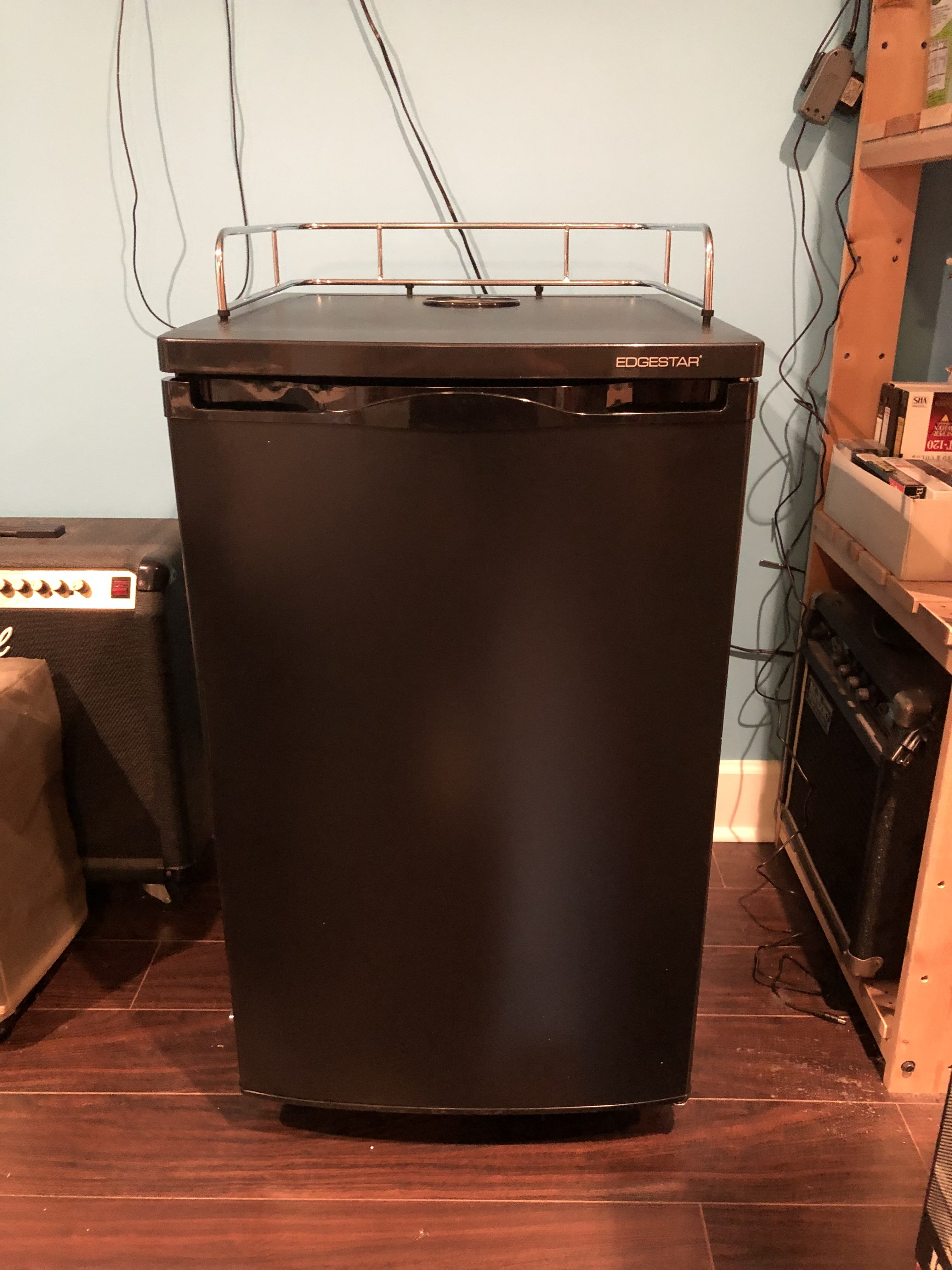
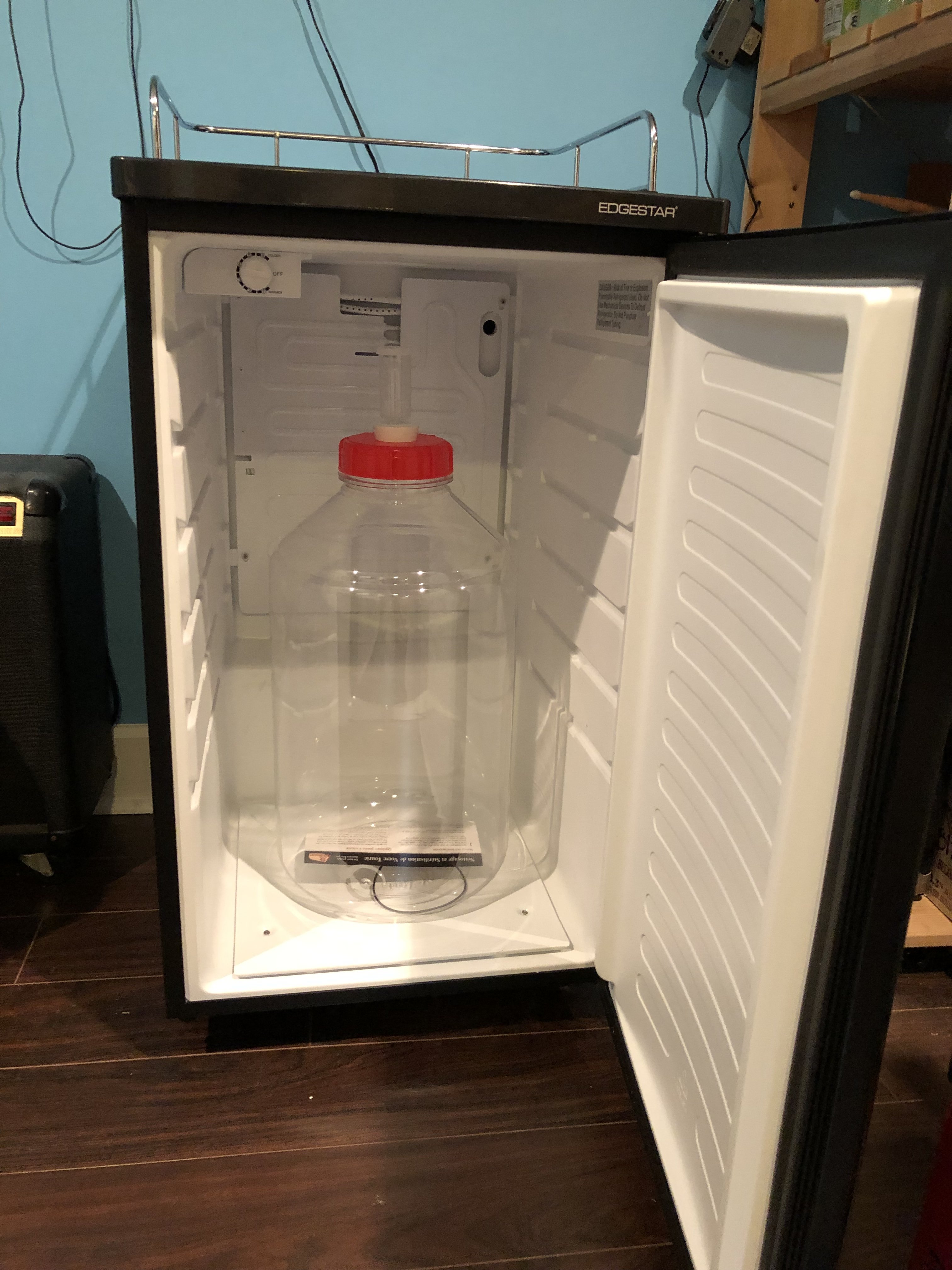
I’m happier than Shag and Scooby at an all you can eat buffet.


Steveruch
Well-Known Member
Yesterday got my side trade….. but I went out last night so pic today 

Thanks @TheDudeLebowski , return box is in planning.

Thanks @TheDudeLebowski , return box is in planning.
A welcome surprise from @pshankstar arrived today. Cooling in the beer frig now. Everything I've had from Frequentem Brewery has been excellent. Have a feeling Crafty is really good too.


I’ve been thinking about doing a bock for an upcoming brew. I’d like to hear if there are any good traditional recipes in there.This book and 6 sets of o rings for kegs along with a fancy metal handled green glass growler that will be great for keeping mead or cider.
There is a chapter with some recipes based on excellent German examples, but not a strict recipe in the sense that it gives one everything. I can PM to explain more If you like.I’ve been thinking about doing a bock for an upcoming brew. I’d like to hear if there are any good traditional recipes in there.
I don't have the Bock entry, it's not a style that appeals to me, but I do have many of the books from that series. I wouldn't look to them for traditional recipes.I’ve been thinking about doing a bock for an upcoming brew. I’d like to hear if there are any good traditional recipes in there.
When those books were first published in the very early 90's, they were really helpful. Reading them now with the benefit of thirty years of advancement in techniques and ingredients, they're....how do I put this politely, a bit quaint.
Unfortunately, they were written at a time when there wasn't much variety in base malt selection. In N. America, you could reliably get US 2-row and US pils malt. US pale ale malt and Continental or Canadian Pils was available, but not reliable. Munich malt might show up but be gone for months at a time. Vienna malt was a treat to be hoarded and if someone mentioned Marris Otter we would've wracked our brains wondering, which cartoon character was that?
Subsequently, those books rely on C-malts like mass-manufactured food relies on corn syrup. Not Caramalts, but generic C-malt.
With Fall just around the corner, I've been turning my attention to Viennas, so I recently pulled my dog-eared copy of the Fix's entry in the series, Vienna, Marzen, Oktoberfest off the bookcase for inspiration. All of their recipes call for "Pale Malt (2-row, Pilsner quality)." That's how old that series is. The rest of the recipes are comprised of a pound or more of C-malts to make up the color and approximate the flavors that we would get from base malts.* They're recipes of their time.
That's not to say that it isn't a good series. These were amazing hardcore homebrewing books! They taught you how to make the best possible swill with the garbage ingredients we had available at the time. Now, they're better suited as historical artifacts with the exception of Terry Foster's entries. Foster has done amazing work updating his Porter, Stout, and Pale Ale entries in the series into Stout and Porter and Pale Ale. Both are hugely expanded and updated. Both are currently a decade old at this point, so they're not as cutting edge as they once were and are starting to show some frayed edges--especially on the invert sugar front. Nevertheless, they're both excellent.
*This was a later entry in the series, so the Fixes call for both newly available German and English C-malts. They also mention that darker English C-malts were starting to become available and were very helpful in the making of these German beers (!). Earlier entries just specified C-malt, meaning C-40. There were no other widely available C-malts. That's why most early micro beers were 10lbs of Klages and a pound of C-40.
I owned a homebrew store when those books were fairly new. 15 of them in the series, I think. I have them all, can’t honestly say I read them all. I gave away a complete set as the grand prize / bos prize for the one and only competition my store ever held/sponsored,I don't have the Bock entry, it's not a style that appeals to me, but I do have many of the books from that series. I wouldn't look to them for traditional recipes.
When those books were first published in the very early 90's, they were really helpful. Reading them now with the benefit of thirty years of advancement in techniques and ingredients, they're....how do I put this politely, a bit quaint.
Unfortunately, they were written at a time when there wasn't much variety in base malt selection. In N. America, you could reliably get US 2-row and US pils malt. US pale ale malt and Continental or Canadian Pils was available, but not reliable. Munich malt might show up but be gone for months at a time. Vienna malt was a treat to be hoarded and if someone mentioned Marris Otter we would've wracked our brains wondering, which cartoon character was that?
Subsequently, those books rely on C-malts like mass-manufactured food relies on corn syrup. Not Caramalts, but generic C-malt.
With Fall just around the corner, I've been turning my attention to Viennas, so I recently pulled my dog-eared copy of the Fix's entry in the series, Vienna, Marzen, Oktoberfest off the bookcase for inspiration. All of their recipes call for "Pale Malt (2-row, Pilsner quality)." That's how old that series is. The rest of the recipes are comprised of a pound or more of C-malts to make up the color and approximate the flavors that we would get from base malts.* They're recipes of their time.
That's not to say that it isn't a good series. These were amazing hardcore homebrewing books! They taught you how to make the best possible swill with the garbage ingredients we had available at the time. Now, they're better suited as historical artifacts with the exception of Terry Foster's entries. Foster has done amazing work updating his Porter, Stout, and Pale Ale entries in the series into Stout and Porter and Pale Ale. Both are hugely expanded and updated. Both are currently a decade old at this point, so they're not as cutting edge as they once were and are starting to show some frayed edges--especially on the invert sugar front. Nevertheless, they're both excellent.
*This was a later entry in the series, so the Fixes call for both newly available German and English C-malts. They also mention that darker English C-malts were starting to become available and were very helpful in the making of these German beers (!). Earlier entries just specified C-malt, meaning C-40. There were no other widely available C-malts. That's why most early micro beers were 10lbs of Klages and a pound of C-40.
I read the Mild Ale book cover to cover way back when. Mild was one of my “pet” styles from my earliest days of brewing.
Got alot out of the barleywine book, too - especially for what was out there at that time.
Last edited:
I think I’ve settled on a recipe that uses dark and light Munich as the base malts with a tiny bit of Carafa II for an OG of 1.068. German Tradition hops to 20 IBUs. @Hoppy2bmerry suggests a tiny bit of chocolate malt. I’m going to play with this in BeerSmith to see what I can come up with. It is nice to have access to all the European malts. I try not to use C-malts in my German lagers.I don't have the Bock entry, it's not a style that appeals to me, but I do have many of the books from that series. I wouldn't look to them for traditional recipes.
When those books were first published in the very early 90's, they were really helpful. Reading them now with the benefit of thirty years of advancement in techniques and ingredients, they're....how do I put this politely, a bit quaint.
Unfortunately, they were written at a time when there wasn't much variety in base malt selection. In N. America, you could reliably get US 2-row and US pils malt. US pale ale malt and Continental or Canadian Pils was available, but not reliable. Munich malt might show up but be gone for months at a time. Vienna malt was a treat to be hoarded and if someone mentioned Marris Otter we would've wracked our brains wondering, which cartoon character was that?
Subsequently, those books rely on C-malts like mass-manufactured food relies on corn syrup. Not Caramalts, but generic C-malt.
With Fall just around the corner, I've been turning my attention to Viennas, so I recently pulled my dog-eared copy of the Fix's entry in the series, Vienna, Marzen, Oktoberfest off the bookcase for inspiration. All of their recipes call for "Pale Malt (2-row, Pilsner quality)." That's how old that series is. The rest of the recipes are comprised of a pound or more of C-malts to make up the color and approximate the flavors that we would get from base malts.* They're recipes of their time.
That's not to say that it isn't a good series. These were amazing hardcore homebrewing books! They taught you how to make the best possible swill with the garbage ingredients we had available at the time. Now, they're better suited as historical artifacts with the exception of Terry Foster's entries. Foster has done amazing work updating his Porter, Stout, and Pale Ale entries in the series into Stout and Porter and Pale Ale. Both are hugely expanded and updated. Both are currently a decade old at this point, so they're not as cutting edge as they once were and are starting to show some frayed edges--especially on the invert sugar front. Nevertheless, they're both excellent.
*This was a later entry in the series, so the Fixes call for both newly available German and English C-malts. They also mention that darker English C-malts were starting to become available and were very helpful in the making of these German beers (!). Earlier entries just specified C-malt, meaning C-40. There were no other widely available C-malts. That's why most early micro beers were 10lbs of Klages and a pound of C-40.
my idea of a easier, cooler way of mopping the floor came a couple of days ago, but i didn't open until today....and found out they're pink...oh, well if they work they'll turn black lik what i ordered soon enough...
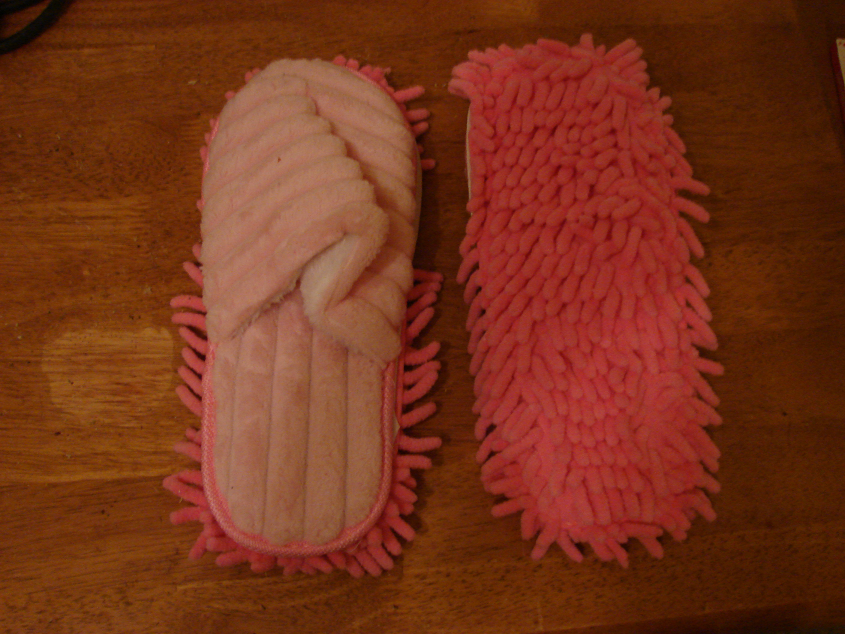
Take THAT kitchen floor!

Take THAT kitchen floor!
- Joined
- Jan 28, 2013
- Messages
- 3,885
- Reaction score
- 2,927
I got these beauties for an upcoming american wheat beer!
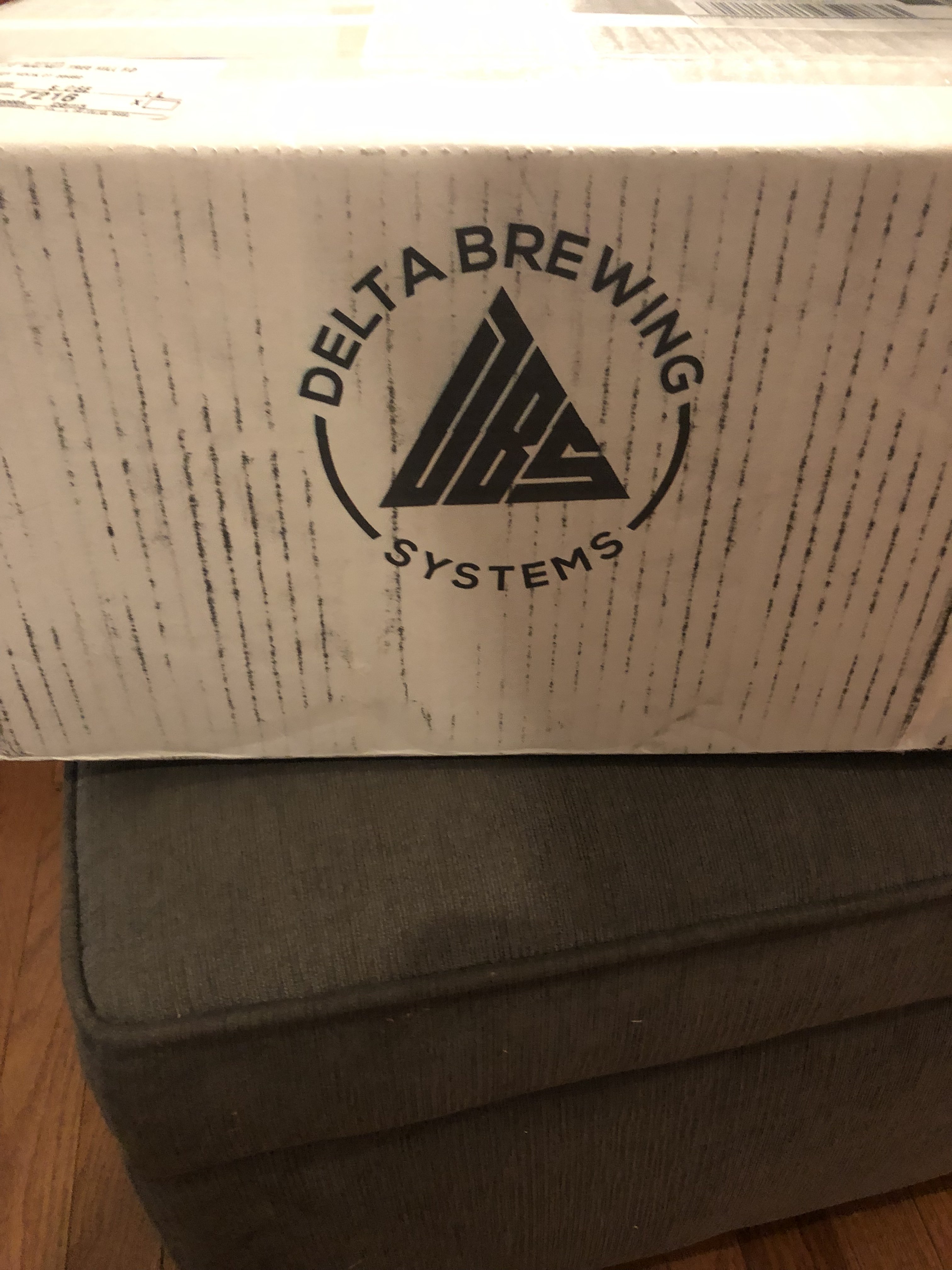
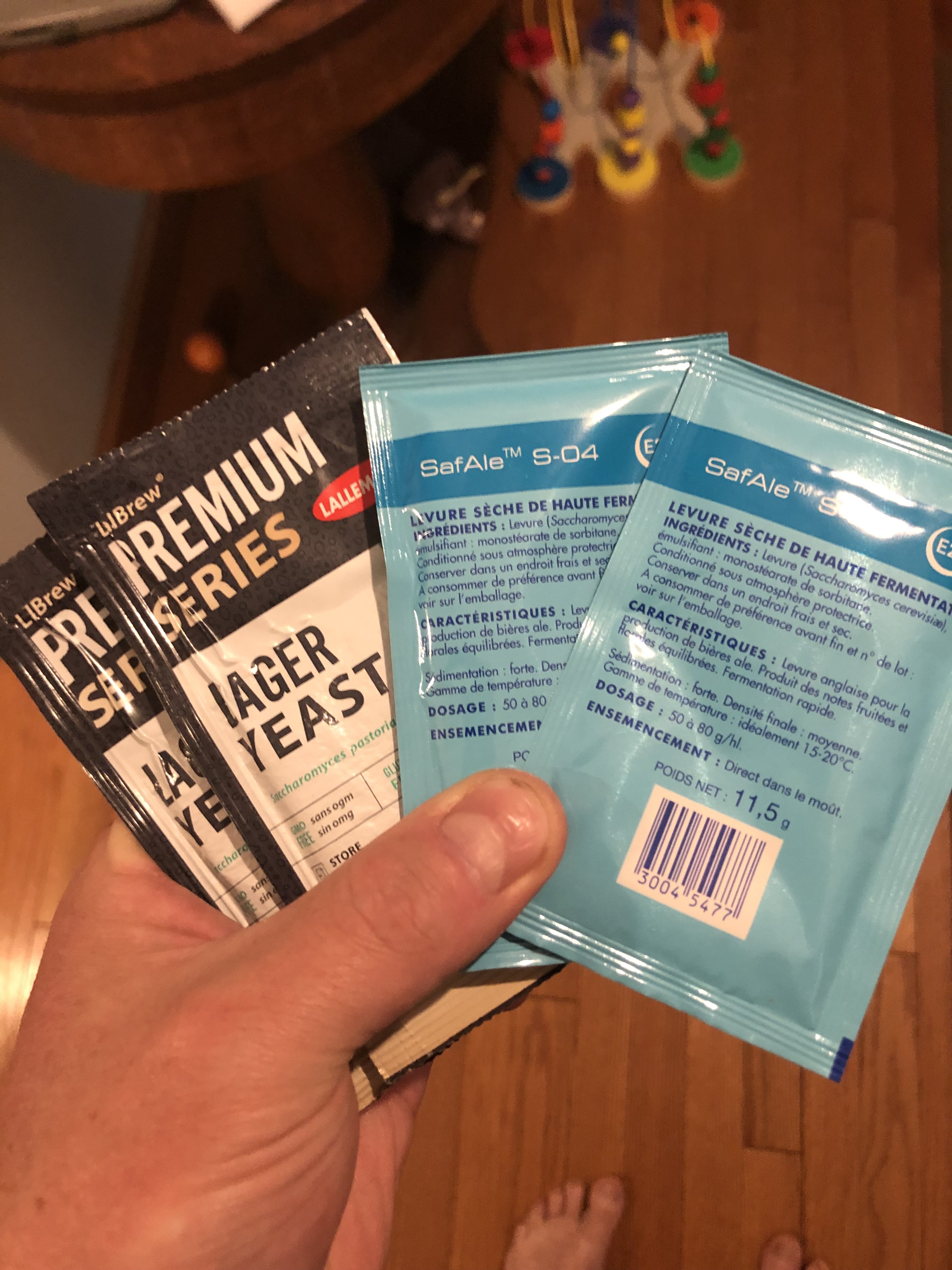

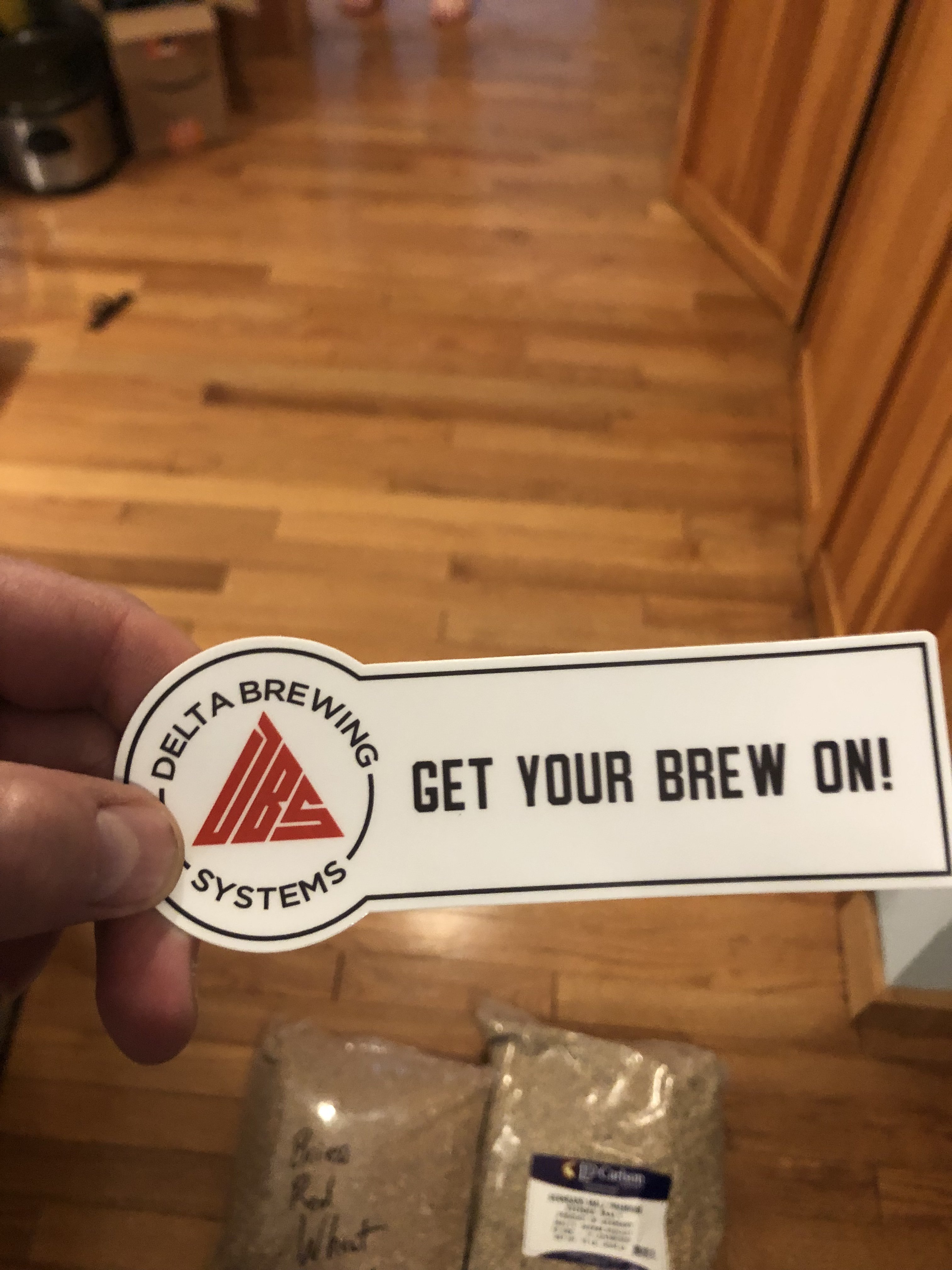




Stocking up


Broken Crow
Ale's what cures 'ya
- Joined
- Oct 12, 2020
- Messages
- 2,046
- Reaction score
- 2,579
Twins!
Baby Kegs:

Bob & Doug McKegzie.
Baby Kegs:

Bob & Doug McKegzie.
Last edited:
McMullan
wort maker
- Joined
- Dec 22, 2015
- Messages
- 2,566
- Reaction score
- 3,438
Yeah, I'm happy to recommend these. It's confirmed I have a rouge 4" clamp on one of my Kegmenters. Much easier to get a sealSeem to be easier to fit and just feel better quality. Pressure testing the 4" next week. I've got a good feeling about them, tbh.
I have two of these as well, I love 'em.
Similar threads
- Replies
- 4
- Views
- 1K
- Replies
- 11
- Views
- 1K
- Replies
- 20
- Views
- 2K


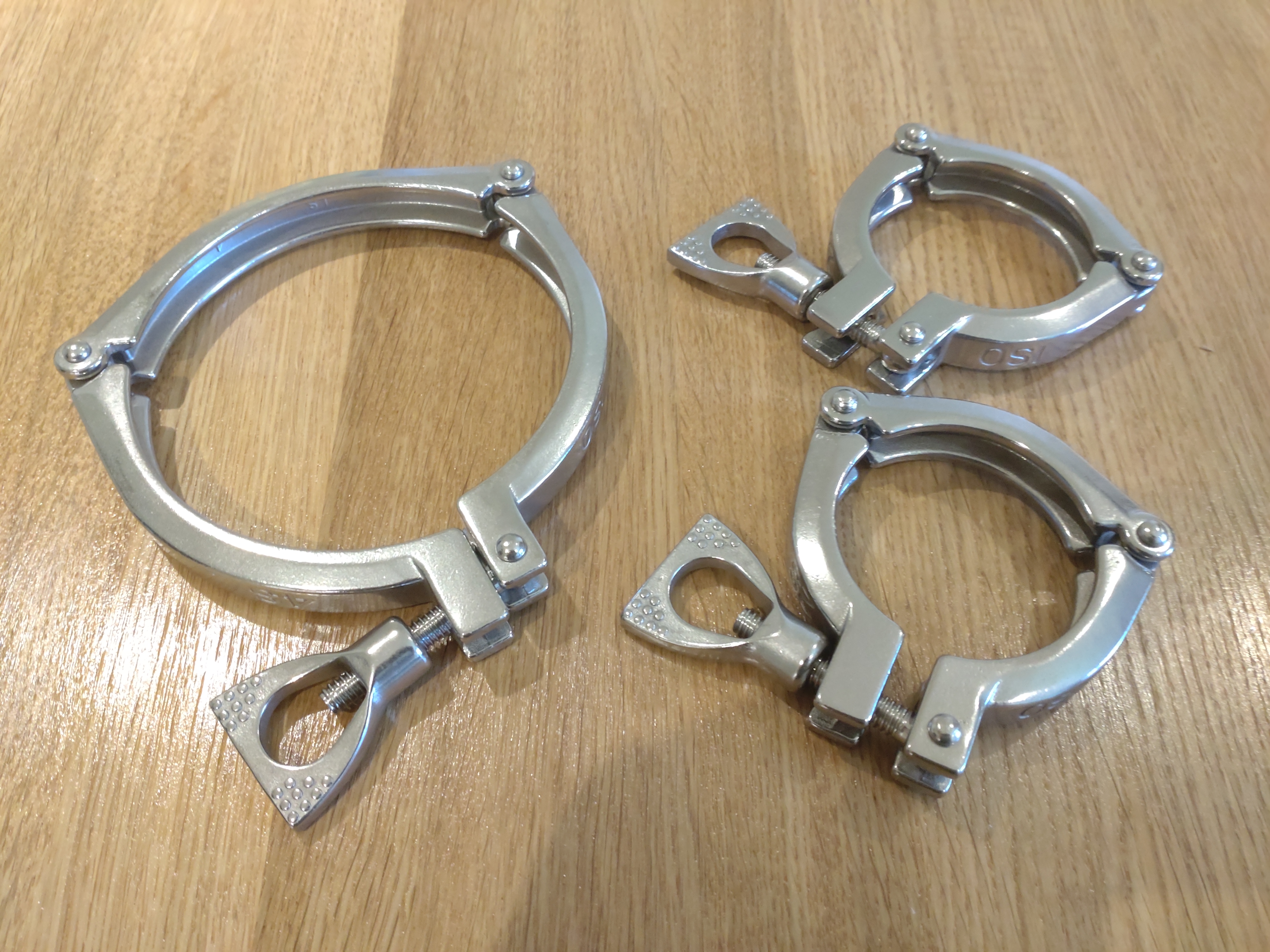
![20220627_165620[1].jpg 20220627_165620[1].jpg](https://cdn.homebrewtalk.com/data/attachments/713/713930-5091f2d59f91dd98523fc5393c04d04b.jpg)

![20220628_195753[1].jpg 20220628_195753[1].jpg](https://cdn.homebrewtalk.com/data/attachments/714/714038-b7169dab3d683d94f11e8983fe6be90a.jpg)



